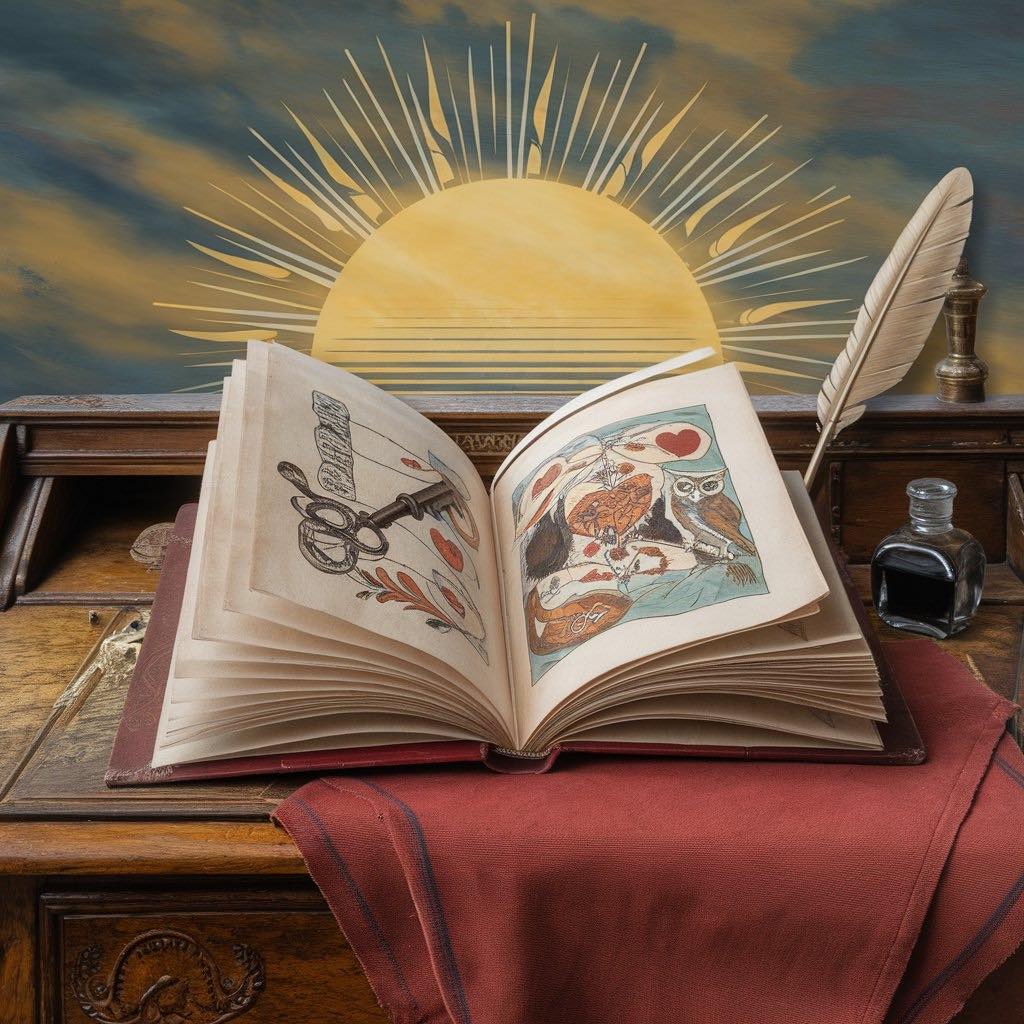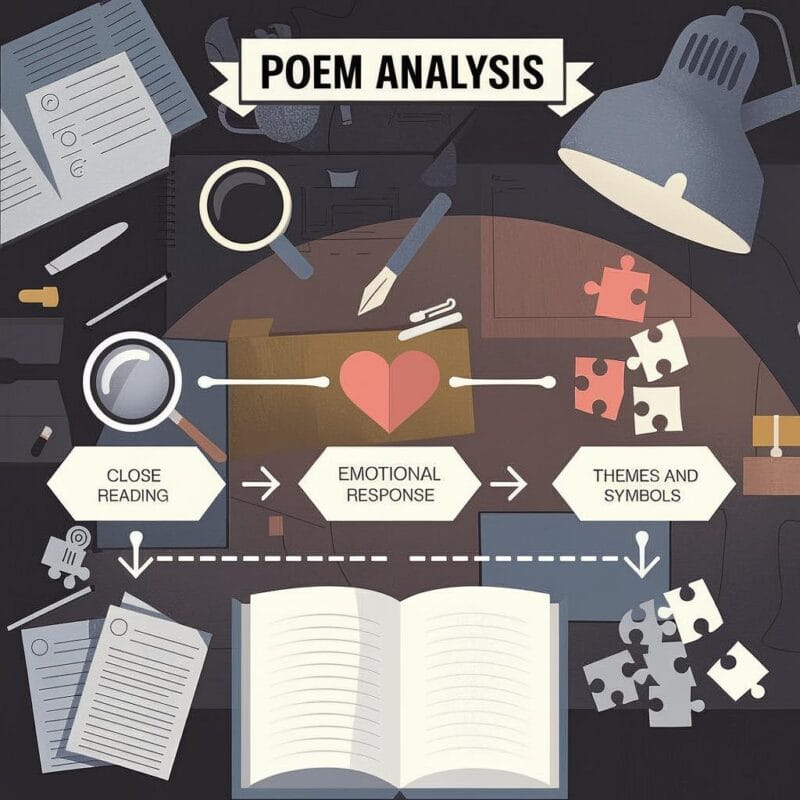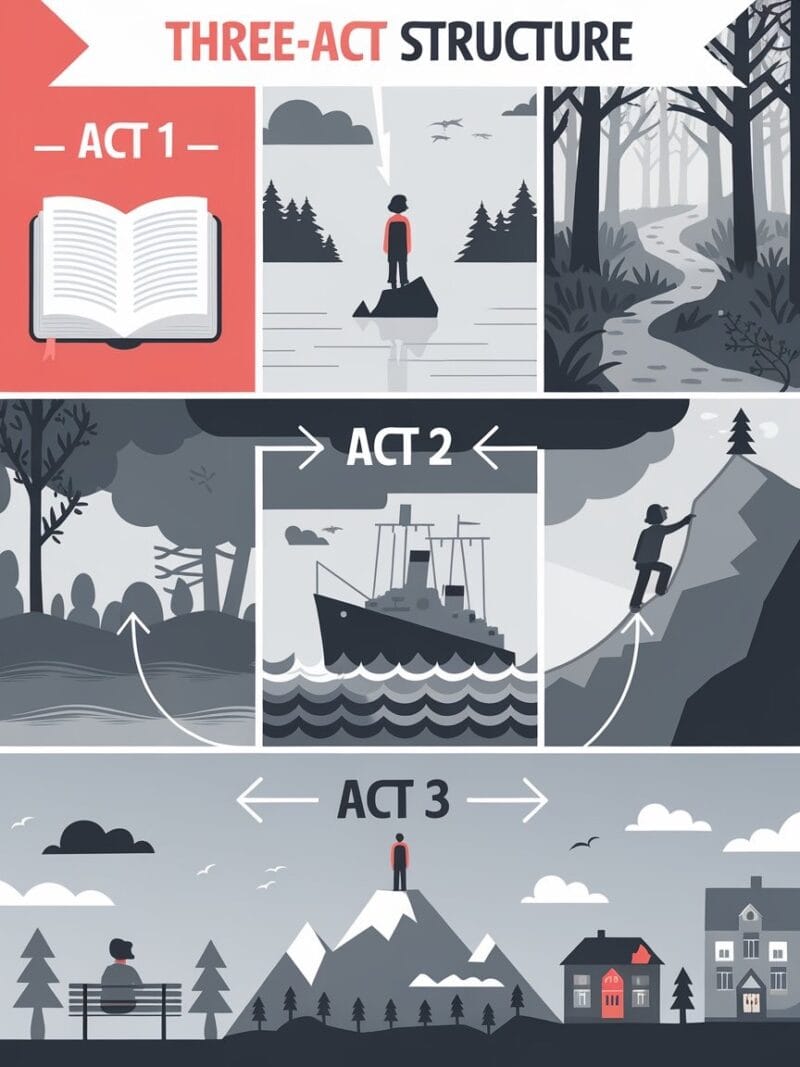- Symbolism in literature bridges the tangible and the abstract by enriching storytelling through the embedding of deeper meanings into objects, characters, and events. It enables authors to communicate themes subtly while offering readers room for interpretation.
- Different types of symbolism serve various narrative purposes:
– Allegorical symbolism: Entire stories function as symbolic frameworks, such as Animal Farm representing political corruption.
– Natural symbolism: Elements like storms and rivers reflect transformation, chaos, or renewal.
– Cultural symbolism: Symbols derive meaning from cultural contexts, like red signifying passion or danger.
– Personal symbolism: Unique to a story, such as a family heirloom symbolizing heritage.
– Universal symbols: Light signifies knowledge, darkness represents ignorance.
– Contextual symbolism: Meaning changes based on a story’s setting.
– Irony and juxtaposition: Contrasts enrich themes, like a sunny day highlighting a character’s grief. - Examples of symbolism include the green light in The Great Gatsby, the mockingbird in To Kill a Mockingbird, and the raven in Poe’s The Raven, each carrying layered significance.
Symbolism is woven into the fabric of literature, acting as a bridge between the concrete and the abstract. It allows authors to embed deeper meanings within their work, encouraging readers to explore ideas and emotions beyond the surface narrative. From a rose symbolizing love to a storm signaling transformation, symbols enrich storytelling by offering nuanced layers of meaning. By engaging with these elements, readers are invited to interpret, question, and connect with the text in their unique ways.
This article delves into the essence of symbolism, highlighting its role in literature and its capacity to communicate literary themes with elegance and subtlety. Through examples and practical insights, it explores how symbols elevate narratives, providing writers with tools to craft stories that resonate across cultures and eras. Whether you’re a reader seeking to uncover hidden meanings or a writer looking to enhance your craft, understanding symbolism offers a window into the heart of layered narratives.
What is symbolism in literature?
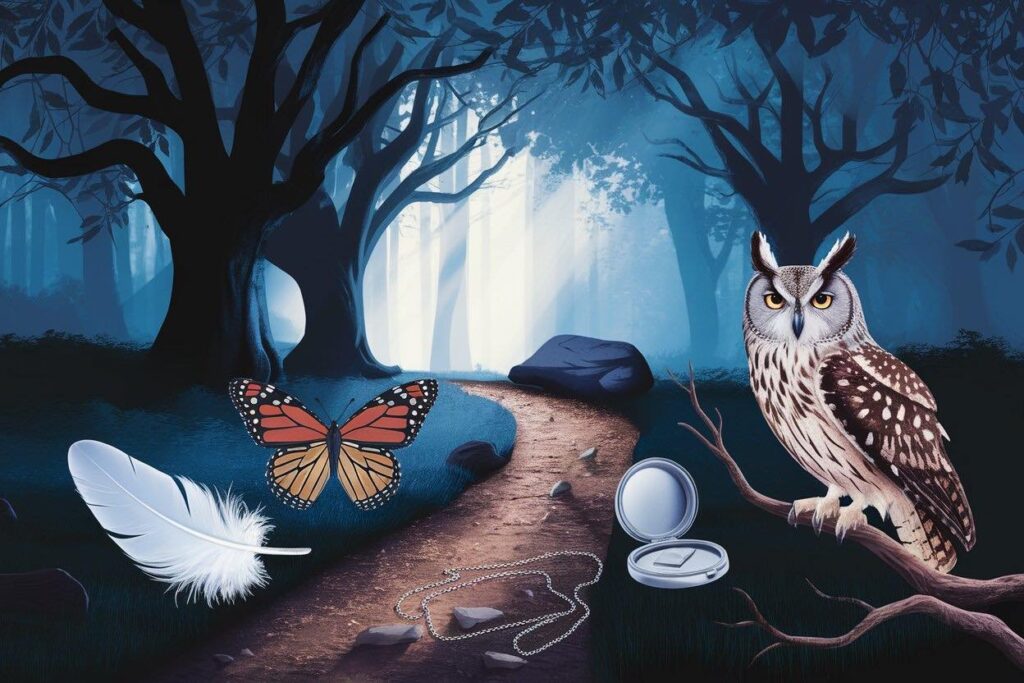
Symbolism is a literary device that bridges tangible elements with abstract concepts, enabling authors to communicate ideas without explicit exposition. By using symbols, writers convey themes and emotions subtly, creating opportunities for the reader’s personal interpretation. From universal motifs like colors and seasons to intricate, story-specific elements, symbols resonate across cultures and time periods.
Symbolism in literature functions as a hidden language, imbuing objects or events with additional meaning. This allows spare details to carry complex significance. For instance, a flickering candle might represent hope in the face of adversity, or a winding road could suggest the uncertainties of life’s journey. Writers employ symbolism to enhance storytelling, offering a richer experience for the reader through subtle, layered meanings.
Symbols often possess multiple interpretations depending on their context. Consider the color white: in one story, it may suggest purity and innocence, while in another, it could convey emptiness or coldness. This multiplicity encourages active engagement, allowing readers to consider their own unique connections and interpretations.
Types of Symbolism in Literature
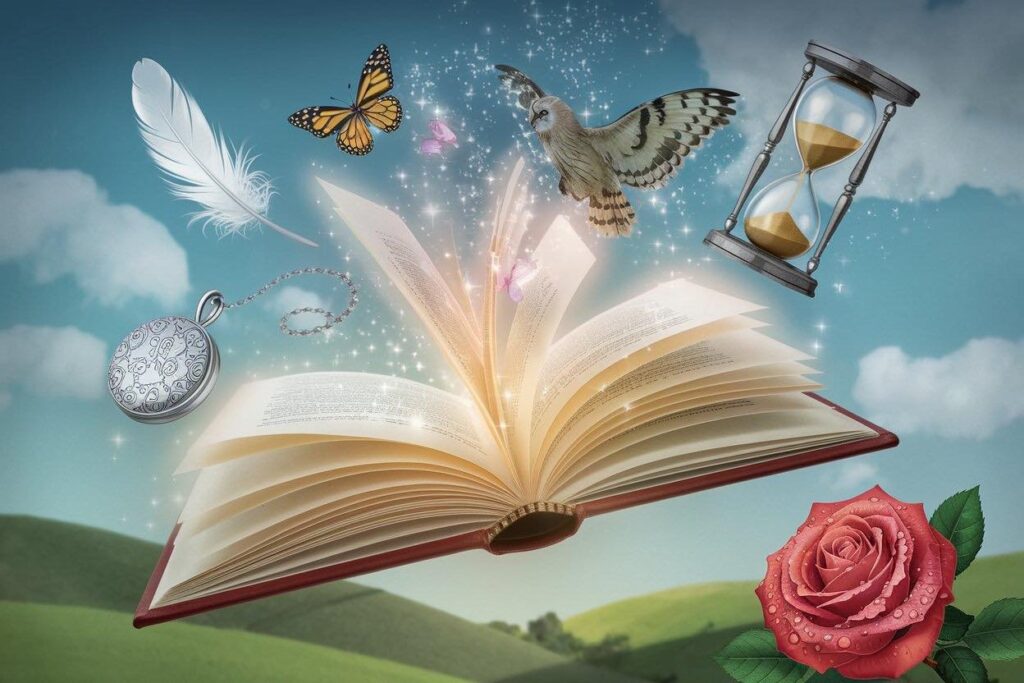
Symbolism in literature serves diverse narrative purposes, offering a richly varied means for authors to convey complex ideas. By understanding the types and applications of symbolism, readers gain insight into how writers weave intricate layers of meaning into their works. This section explores the primary forms of symbolism, illuminating their unique roles in enriching literary narratives.
- Allegorical Symbolism: Allegory operates on a broad scale, where the entire narrative functions as a symbolic framework. Characters, events, and settings collectively represent abstract ideas or political concepts. For instance, George Orwell’s Animal Farm (1945) is an allegory of power dynamics and corruption, encapsulating the events of the Russian Revolution through its characters and plot.
- Natural Symbolism: Elements of nature, such as rivers, storms, or seasons, frequently serve as symbols. These elements can signify life cycles, internal transformation, or emotional states. A storm might reflect chaos or inner conflict, while a sunrise symbolizes renewal and hope.
- Cultural Symbolism: Some symbols derive their meaning from specific cultural or historical contexts. A white flag universally signifies surrender, but other symbols, like colors, vary widely in connotation. For example, red might represent passion in one culture and danger in another.
- Personal Symbolism: In certain narratives, symbols acquire meanings unique to the story or its characters. These symbols often reflect themes or emotional significance, such as a family heirloom symbolizing heritage, identity, or unresolved conflicts within a character’s journey.
- Universal Symbols: Certain symbols hold consistent meanings across cultures and time periods. Light often represents knowledge or hope, darkness signifies ignorance or despair, and water suggests cleansing or rebirth.
- Contextual Symbolism: Some symbols gain meaning within the specific context of a story. Objects that might seem ordinary in daily life can take on profound significance depending on how they are portrayed in the narrative. For example, sea glass may symbolize transformation or healing within one story while representing loss in another.
- Juxtaposition and Irony in Symbolism: Symbols can create stark contrasts, enriching the narrative through irony. For example, a sunny day juxtaposed with a grieving character highlights the dissonance between external circumstances and internal emotions. This contrast emphasizes the multifaceted nature of human experience.
- Emotional and Psychological Symbolism: Symbols often reflect a character’s internal state. A storm raging outside might mirror inner turmoil, offering a subtle glimpse into a character’s psyche. These symbols enable readers to perceive the intricacies of emotions and thematic connections without overt exposition.
Examples of Symbolism in Literature
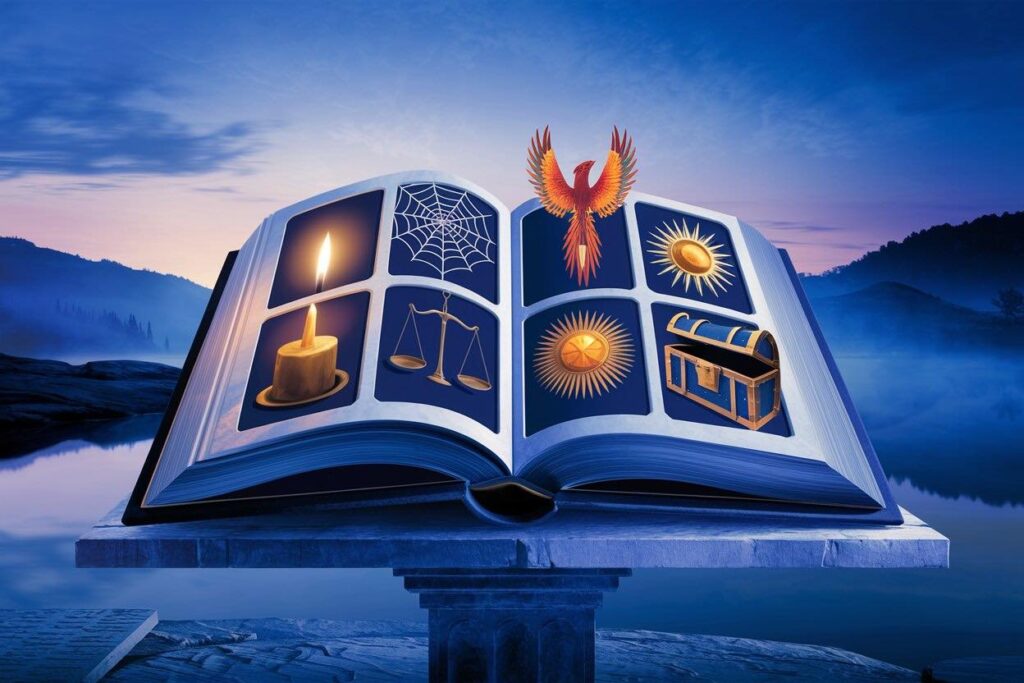
Building on the various types of symbolism discussed, we will now explore key examples that demonstrate how symbols in literature serve as gateways to deeper layers of meaning, enhancing the reader’s connection to the narrative. By examining these examples, we can explore how authors use specific objects, characters, or events to reflect broader themes and emotions.
Symbolism in Novels
- The “green light” in The Great Gatsby (1925) by F. Scott Fitzgerald: In The Great Gatsby, F. Scott Fitzgerald uses the green light at the end of Daisy’s dock as a symbol of Gatsby’s unreachable aspirations and the flawed nature of the American Dream. This light, always just out of reach, represents both hope and the futility of pursuing an idealized future.
- The “conch shell” in Lord of the Flies (1954) by William Golding: In Lord of the Flies, the conch shell symbolizes order and democracy. As the boys’ descent into savagery progresses, the destruction of the conch mirrors the collapse of their social structure, illustrating the loss of civilization and the rise of primal instincts.
- The “scarlet letter” in The Scarlet Letter (1850) by Nathaniel Hawthorne: Nathaniel Hawthorne’s The Scarlet Letter revolves around the titular symbol, which represents sin, shame, and redemption. As the story develops, the scarlet letter transforms from a mark of disgrace to a symbol of strength and identity for Hester Prynne.
- The “mockingbird” in To Kill a Mockingbird (1960) by Harper Lee: In To Kill a Mockingbird, the mockingbird symbolizes innocence and virtue. Characters like Tom Robinson and Boo Radley embody this symbol, as their inherent goodness leads to their suffering due to prejudice and social injustice.
- “Aslan” in The Lion, the Witch and the Wardrobe (1950) by C.S. Lewis: In C.S. Lewis’s The Lion, the Witch and the Wardrobe, Aslan, the lion, symbolizes redemption and sacrifice. His character embodies the battle between good and evil, serving as a reminder of the ongoing fight for justice and virtue.
Symbolism in Short Stories
- The “yellow wallpaper” in The Yellow Wallpaper (1892) by Charlotte Perkins Gilman: Charlotte Perkins Gilman’s The Yellow Wallpaper uses the wallpaper to symbolize the protagonist’s mental entrapment and societal constraints. Her growing obsession with the wallpaper reflects her internal struggle and desire for autonomy.
- The “black box” in The Lottery (1948) by Shirley Jackson: In The Lottery, the black box symbolizes tradition, conformity, and the unquestioning adherence to outdated customs. Despite its dilapidated state, the villagers continue to use the box year after year, representing the unchallenged acceptance of ritualistic violence. The box’s worn condition underscores the blind, unquestioned nature of the town’s cruel tradition.
- The “necklace“ in The Necklace (1884) by Guy de Maupassant: In The Necklace, the necklace symbolizes vanity, pride, and the destructive pursuit of material wealth. The protagonist, Madame Loisel, desires the appearance of luxury and social status, which leads her to borrow the necklace. When it is lost, the symbol of vanity and desire for outward appearance ultimately leads to her downfall, showing the consequences of living beyond one’s means.
- The “eyes” in The Tell-Tale Heart (1843) by Edgar Allan Poe: In Edgar Allan Poe’s The Tell-Tale Heart, the old man’s eye becomes a symbol of paranoia and guilt for the narrator. His obsession with the “vulture-like” eye drives him to murder the old man, believing that eliminating the eye will end his torment. However, the eye represents the narrator’s growing madness, and after the crime, the image of the eye—and its symbolic weight—haunts him, leading to his confession.
- The “open window” in The Open Window (1911) by Saki (H.H. Munro): In The Open Window, the open window symbolizes the boundary between reality and illusion. It serves as a metaphor for the protagonist’s perception of the world and the lies she weaves. Through the window, the young woman, Vera, tricks her visitor into believing her aunt’s tragic loss, showing how a simple, open space can represent manipulation and the fragility of truth.
Symbolism in Poetry
- The “albatross” in The Rime of the Ancient Mariner (1798) by Samuel Taylor Coleridge: In Samuel Taylor Coleridge’s The Rime of the Ancient Mariner, the albatross represents guilt and the burden of responsibility. Its death marks the beginning of the mariner’s punishment, symbolizing the consequences of his actions.
- The “raven” in The Raven (1845) by Edgar Allan Poe: In Poe’s The Raven, the raven symbolizes despair, loss, and unrelenting sorrow. Its repeated utterance of “Nevermore” serves as a constant reminder of the narrator’s inability to escape grief, making the bird a symbol of hopelessness and eternal mourning.
- The “rose” in The Sick Rose (1794) by William Blake: In Blake’s The Sick Rose, the rose is a symbol of love tainted by decay and corruption. The poem suggests the vulnerability of beauty and innocence, with the “worm” representing an internal force of destruction that undermines the purity of love.
- The “butterfly” in The Butterfly (1959) by Pavel Friedmann: In Friedmann’s The Butterfly, the butterfly symbolizes hope and fleeting beauty amidst suffering. Written in a concentration camp during World War II, the butterfly represents the resilience of the human spirit even in the face of unimaginable hardship.
- The “shadow” in The Shadow (1885) by Robert Louis Stevenson: In Stevenson’s The Shadow, the shadow is a symbol of identity, reflecting the darker aspects of the self. It serves as both a literal and figurative presence in the poem, exploring themes of isolation, mortality, and the inescapability of one’s nature.
Common Symbolism in Literature
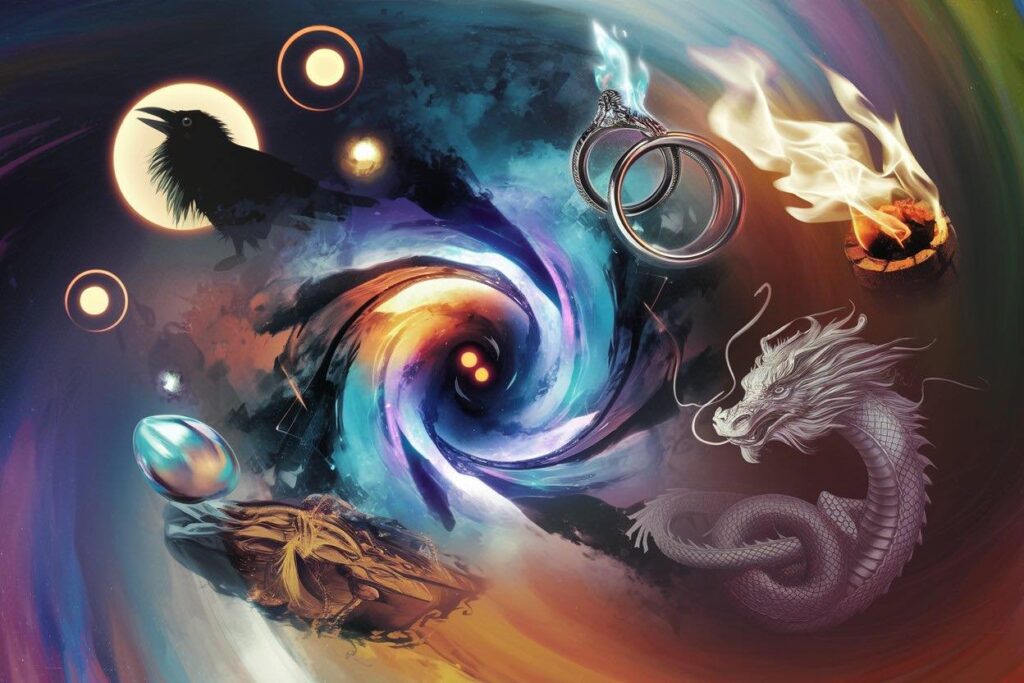
The true power of symbolism lies in its ability to evoke emotion, convey abstract ideas, and offer readers a more immersive experience. While some symbols are immediately recognizable, others are more subtle, allowing authors to convey complex ideas without overt explanation. The real artistry of symbolism often resides in its nuanced application, where its meaning is not fully revealed but rather suggested, sparking curiosity.
Cultural context plays a significant role in how symbols are understood. A color, for instance, can carry vastly different meanings depending on the cultural framework. In many Western cultures, the color white is often associated with purity and innocence, while in some Eastern traditions, it may represent mourning and death.
Similarly, the symbolism of animals, such as the lion, can vary greatly; in some cultures, it signifies power and royalty, while in others, it may represent danger or chaos. These variations remind us that interpretation is rarely fixed—symbols can take on unique meanings depending on the context and the audience’s perspective.
While some symbols are universally understood, others are more personal, reflecting the experiences and emotions of specific characters. This personalized symbolism encourages readers to connect more deeply with the story, as it mirrors the characters’ inner struggles. The storm in The Rime of the Ancient Mariner reflects not just the chaos of the sea but the mariner’s own internal turmoil, making the storm a manifestation of guilt and redemption.
Symbols also serve as metaphors for universal themes, transcending time and place. In The Great Gatsby, the green light at Daisy’s dock symbolizes hope, ambition, and the elusive American Dream. Its evolving significance highlights the futility of Gatsby’s dreams and his inability to recapture the past. In The Scarlet Letter, the forest symbolizes freedom and refuge, offering a stark contrast to the rigid Puritan society that confines Hester Prynne.
Finally, effective use of symbolism requires careful consideration of the audience. Symbols that resonate strongly with one group of readers may be less impactful for another, depending on their cultural background, experiences, and familiarity with the text. This variability highlights the importance of balancing universal symbols with those that speak to more specific themes or settings.
When used effectively, symbolism does more than enhance a story—it reshapes it, giving ordinary elements deeper meaning. A simple gesture, an unremarkable object, or a single word becomes a vessel for emotions and ideas that extend beyond their surface. These symbols remain with the reader after the story ends, subtly influencing how the narrative is understood and remembered.
Further Reading
The Lure of Literary Symbolism by Elizabeth Havey, Writer Unboxed
Do You See What I See: Symbolism in Literature by Beth Anne Freely Rauch, Medium
5 Important Ways to Use Symbolism in Your Story by Becca Puglisi, Writers Helping Writers
Symbolism and Imagery In Writing on Reddit
